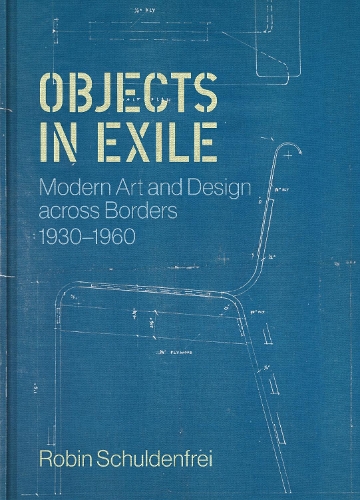
Objects in Exile: Modern Art and Design across Borders, 19301960
(Hardback)
Publishing Details
Objects in Exile: Modern Art and Design across Borders, 19301960
By (Author) Robin Schuldenfrei
Princeton University Press
Princeton University Press
1st May 2024
United States
Classifications
General
Non Fiction
History of architecture
History of design
111.85
Physical Properties
Hardback
352
Width 191mm, Height 267mm
Description
An essential examination of how emigration and resettlement defined modernism
In the fraught years leading up to World War II, many modern artists and architects emigrated from continental Europe to the United States and Britain. The experience of exile infused their modernist ideas with new urgency, and forced them to use certain materials in place of others, modify existing works, and reconsider their approach to design itself. In Objects in Exile, Robin Schuldenfrei reveals how the process of migration was crucial to the development of modernism, charting how modern art and architecture was shaped by the need to constantly faceand transcendthe materiality of things.
Taking readers from the prewar era to the 1960s, Schuldenfrei explores the objects these migrs brought with them, what they left behind, and the new works they completed in exile. She argues that modernism could only coalesce with the abandonment of national borders in a process of emigration and resettlement, and brings to life the vibrant postwar period when avant-garde ideas came together and emerged as mainstream modernism. Examining works by Walter Gropius, Lszl Moholy-Nagy, Lucia Moholy, Herbert Bayer, Anni and Josef Albers, and others, Schuldenfrei demonstrates the social impact of art objects produced in exile.
Shedding critical light on how the pressures of dislocation irrevocably altered the course of modernism, Objects in Exile shows how artists and designers, forced into exile by circumstances beyond their control, changed in unexpected ways to meet the needs and contexts of an uncertain world.
Author Bio
Robin Schuldenfrei is the Tangen Reader in 20th-Century Modernism at the Courtauld Institute of Art, University of London. Her books include Luxury and Modernism: Architecture and the Object in Germany, 19001933 (Princeton), Iteration: Episodes in the Mediation of Art and Architecture, and Atomic Dwelling: Anxiety, Domesticity, and Postwar Architecture.
